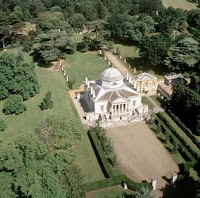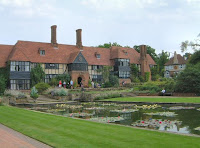 March is a strange month. It’s not quite the “armpit of the year” (that would be February, the Darkest Month), but it’s not quite spring, either. Sometimes it’s cold (last week), sometimes summer-warm (this week), and it’s always allergenic. But I can see spring just over the horizon as the tips of my lilac bushes turn green, and Daylight Savings Time (not to mention St. Patrick’s Day) is only a couple weeks away!
March is a strange month. It’s not quite the “armpit of the year” (that would be February, the Darkest Month), but it’s not quite spring, either. Sometimes it’s cold (last week), sometimes summer-warm (this week), and it’s always allergenic. But I can see spring just over the horizon as the tips of my lilac bushes turn green, and Daylight Savings Time (not to mention St. Patrick’s Day) is only a couple weeks away!
One thing I’ve been doing this week is planning my garden. I have a tiny house with a wee back yard, but I do like to put in flowers along the front walkway and in pots on the porch, and I have a vegetable patch in the back yard. I’ve been looking over seed catalogs, and think I’m going to try some new heirloom tomatoes this year, as well as cucumbers, green beans, and peppers. Any other suggestions?
 So, it seemed appropriate to find that today marks the anniversary of the founding of the Royal Horticultural Society in 1804! (It was just called Horticultural Society then, and gained the “Royal” in 1861, by charter from Prince Albert). According to the Society’s website, “The Royal Horticultural Society is the UK’s leading gardening charity dedicated to advancing horticulture and promoting good gardening. Our goal is to help share a passion for plants, to encourage excellence in horticulture and inspire all those with an interest in gardening.”
So, it seemed appropriate to find that today marks the anniversary of the founding of the Royal Horticultural Society in 1804! (It was just called Horticultural Society then, and gained the “Royal” in 1861, by charter from Prince Albert). According to the Society’s website, “The Royal Horticultural Society is the UK’s leading gardening charity dedicated to advancing horticulture and promoting good gardening. Our goal is to help share a passion for plants, to encourage excellence in horticulture and inspire all those with an interest in gardening.”
The Society was first suggested by John Wedgwood (son of Josiah) in 1800. “He wanted to hold regular meetings, allowing the society’s members the opportunity to present papers on their horticultural activities and discoveries, to encourage discussion of them, and to publish the results. The society would also award prizes for gardening achievements.” It was 4 years before the first meeting, with 7 members, on March 7, 1804 at Hatchards bookshop in Piccadilly, London. The other members included William Townsend Aiton, Superintendent of Kew Gardens; Sir Joseph Banks, President of the Royal Society; and William Forsyth, Superintendent of the gardens of St. James’s Palace and Kensington Palace.
 The RHS now has 4 flagship gardens in England, all of which look gorgeous. Wisley Garden, near the village of Wisley in Surrey (pictured at left); Rosemoor in Devon; Hyde Hall in Essex; and Harlow Carr in Harrogate, North Yorkshire. Their first garden was in Kensington from 1818 to 1822, and in 1821 they leased part of the estate of Chiswick to set up an experimental garden. They held fetes there, and shows with competitive classes for flowers and vegetables.
The RHS now has 4 flagship gardens in England, all of which look gorgeous. Wisley Garden, near the village of Wisley in Surrey (pictured at left); Rosemoor in Devon; Hyde Hall in Essex; and Harlow Carr in Harrogate, North Yorkshire. Their first garden was in Kensington from 1818 to 1822, and in 1821 they leased part of the estate of Chiswick to set up an experimental garden. They held fetes there, and shows with competitive classes for flowers and vegetables.
They’re also famous for their annual flower shows, the most well-known being the Chelsea Flower Show. There are also 8 London Flower Shows at the Royal Horticultural Halls, the yearly Hampton Court Palace Flower Show, and Tatton Park Flower Show in Cheshire, and they also administer the Britain in Bloom competition. (I’ve never attended one of these shows, but I love looking at the photos every year and trying to find out if the plants featured would also flourish here).
 A good source to learn more about the RHS is Brent Elliott’s The Royal Horticultural Society, A History: 1802-2004.
A good source to learn more about the RHS is Brent Elliott’s The Royal Horticultural Society, A History: 1802-2004.
Reading about all of this just makes me want spring to get here sooner, so I can go out and dig in the dirt! Do you garden? What are some of your favorite “crops”? And if you’ve ever attended one of these flower shows, or seen the RHS gardens, tell us about it! Happy almost-spring, everyone…















